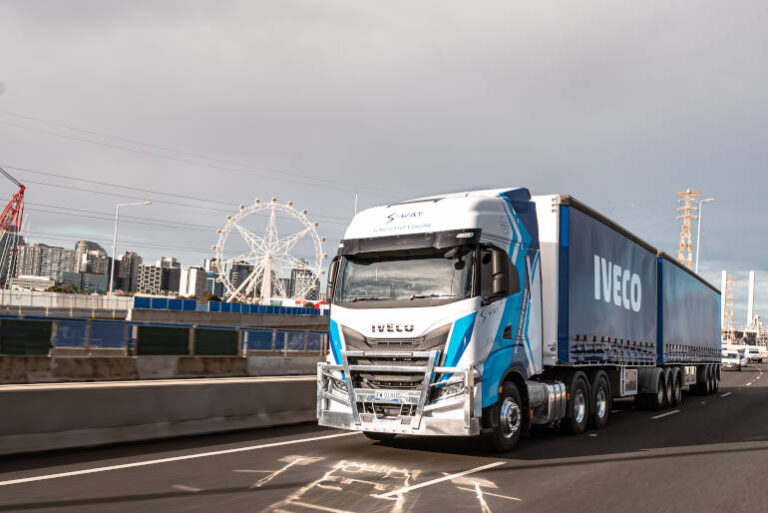With rising fuel prices, increasing maintenance expenses, and pressure to maximise fleet efficiency, fleet operators are constantly searching for ways to reduce costs. One of the most powerful tools available today is telematics—a technology that provides real-time vehicle data and actionable insights. However, simply having telematics installed isn’t enough; the real value comes when fleet managers use the data effectively to improve operations.
Optimising Fuel Efficiency
Fuel costs represent one of the largest expenses for any fleet, but telematics can play a crucial role in reducing consumption. Systems like IVECO ON Telematics provide detailed fuel usage reports and driving style evaluations that help fleet managers identify inefficiencies.
For example, aggressive driving behaviours such as harsh acceleration, idling, and excessive braking contribute significantly to fuel wastage. Telematics can flag these habits and offer live in-cab coaching to encourage more fuel-efficient driving. Implementing driver training programs based on telematics insights has been shown to reduce fuel consumption by up to 15%, resulting in substantial long-term savings.
Reducing Maintenance Costs with Predictive Analytics
Unexpected breakdowns not only lead to expensive repairs but also result in unplanned downtime, disrupting fleet operations. Telematics enables predictive maintenance, alerting fleet managers to potential issues before they become costly problems.
By tracking odometer readings, battery health, oil levels, and coolant status, telematics systems like IVECO ON can schedule maintenance proactively. This means vehicles are serviced at the right time, preventing breakdowns and extending their lifespan. A well-maintained fleet also reduces the likelihood of major component failures, significantly lowering long-term repair costs.
Maximising Vehicle Uptime
For transport operators, vehicle downtime translates to lost revenue. Telematics solutions such as IVECO’s Customer Uptime Centre work in conjunction with data monitoring to detect potential failures early and coordinate rapid repairs.
In the event of a fault, the system can automatically notify the nearest service centre, ensuring minimal disruption to operations. Remote diagnostics and over-the-air software updates further reduce the need for lengthy workshop visits, keeping vehicles on the road and generating revenue.
Improving Fleet Utilisation and Route Efficiency
Telematics provides real-time location tracking, allowing fleet managers to optimise routing and reduce unnecessary mileage. By integrating telematics with route planning software, fleets can:
- Avoid traffic congestion and select the fastest routes
- Reduce empty miles by optimising load distribution
- Improve delivery schedules, enhancing customer satisfaction
Better route efficiency not only reduces fuel costs but also maximises the number of jobs a fleet can complete per day, increasing overall profitability.
Enhancing Compliance and Safety
Regulatory compliance is another area where telematics provides value. Systems like IVECO ON monitor driver behaviour, alerting fleet managers to speeding, harsh braking, and other risky driving habits. These insights help improve driver training programs, reduce accident risks, and lower insurance premiums—a major cost-saving factor.
Furthermore, automated electronic logbooks assist with compliance, ensuring drivers adhere to legal rest break requirements and minimising the risk of penalties.
The Bottom Line: Data-Driven Fleets Save Money
For fleet operators willing to leverage the full potential of telematics, the financial benefits are undeniable. By using real-time data and actionable insights, fleets can:
✅ Cut fuel expenses by improving driver behaviour
✅ Reduce maintenance costs through proactive servicing
✅ Minimise downtime with predictive diagnostics
✅ Optimise routes for greater efficiency
✅ Enhance safety and compliance, lowering insurance risks
Technology like IVECO ON Telematics is revolutionising fleet management, but success lies in actively using the data to drive decision-making. For fleets committed to efficiency, telematics is no longer just an option—it’s a necessity for sustainable cost savings and operational success.






